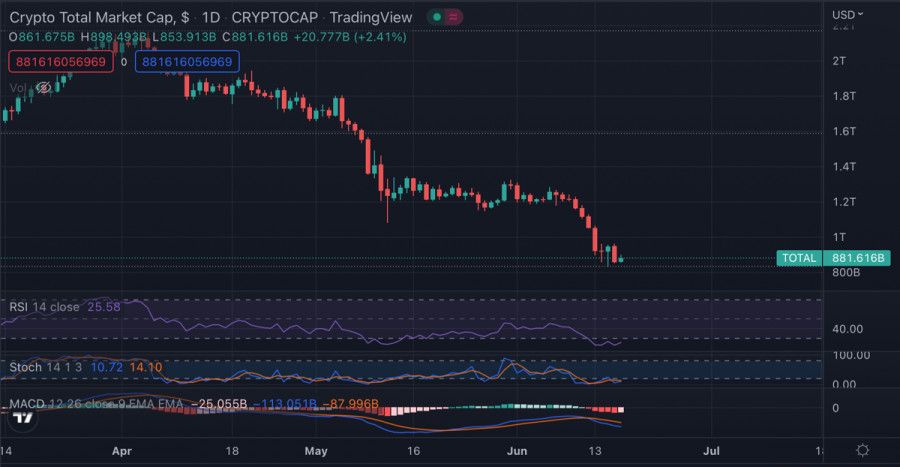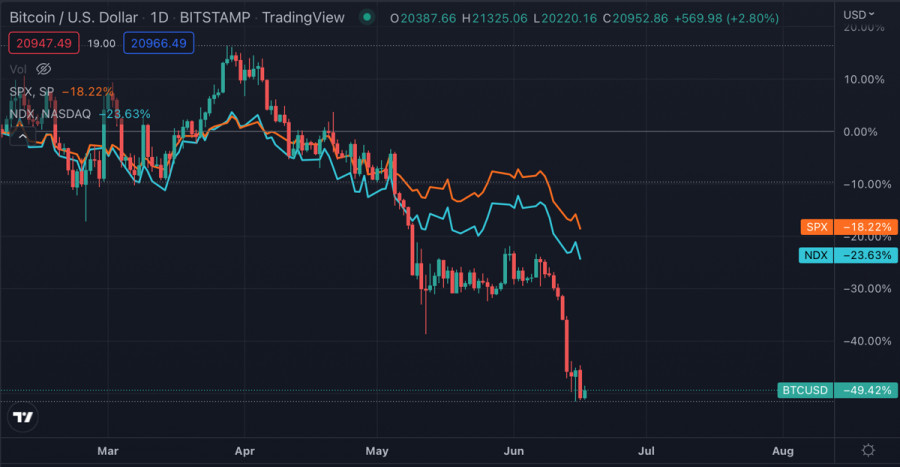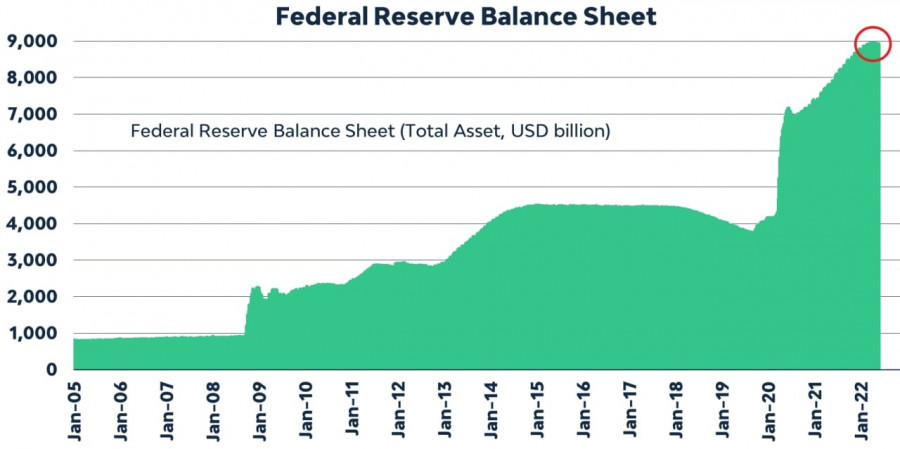
Over the past two weeks, the cryptocurrency market capitalization has fallen to $870 billion from $1.2 trillion. Most cryptos are on the verge of collapse, and the largest cryptocurrency companies are downsizing their staff and looking for funding to cover margin calls. Even though Bitcoin and the cryptocurrency market have hit the bottom according to all major metrics, capitalization could fall even more if BTC breaks through $20,000 from above.

The importance of this level cannot be underestimated. Notably, after a breakthrough of $20,000, the asset is unlikely to plummet lower, because the area of $16,000-$19,000 attracts market participants. However, from a psychological point of view, if Bitcoin collapses below $20,000, it may be the reason for another wave of sell-offs in BTC and other cryptocurrencies. Besides, with further decrease, the market will lose liquidity, as more and more companies and liquidity pools will try to save at least some part of their capital. At the same time, the whole market is watching the USDD losing its peg to the US dollar, as well as closely watching the problem with the Three Arrows Capital's margin call coverage.

At the same time, the Fed is becoming more aggressive on monetary policy and continues to withdraw $45 billion in June. In July, this amount will rise to $95 billion. This is already causing funds and large companies to withdraw liquidity en masse from the stock and cryptocurrency markets. Given the close correlation between BTC and stock indices, the likelihood of a joint drop to another bottom remains high. Miners also continue to exert pressure on BTC quotations, moving more than 88,000 coins to exchanges in recent weeks.

Despite fundamental negative factors, there are factors that point to the end of the downtrend and the transition to a prolonged consolidation stage. The main signal to this is the growth of the volume of stablecoins in the market. As of June 17, the share of stablecoins in market capitalization reached 15%. This is partly due to altcoins and BTC reaching local lows, but it's also evidence of preparations for mass cryptocurrency accumulation. Notably, even with the growth of volumes, the current stablecoins are not enough for a full trend reversal. Therefore, the growth of stablecoin volumes is seen as a stabilizing factor, which will allow buyers to hold the price above $20,000.
As for the technical picture, the 200-week moving average has received a lot of attention over the past few months. There are two positive factors here both fundamental and technical. The fundamental factor is that the Bitcoin price consolidated on a bounce from the 200-week average, after which an uptrend or upward spurt began. The local or technical positive factor suggests that the price has not fallen below that level since 2014. Moreover, the rule "the more often the area is tested, the more probable its breakthrough" does not work here. This is a strong argument in favor of the fact that the main stage of the fall is over.
Santiment notes the preparation of large wallets for the mass accumulation of Bitcoins, as well as the emergence of a key level at $22,000. The emergence of such a level itself indicates the formation of a local bottom and stabilization of the situation. The current week began with a peak of transactions in the amount of $100,000, indicating a gradual rise in the activity of large investors. In the nearest future, we should expect a reduction in stablecoin volumes and an outflow of BTC from exchanges. The current crisis of the crypto market is not comparable even to the coronavirus outbreak time, and therefore, we should be ready for any scenario, including a decrease below $20,000.